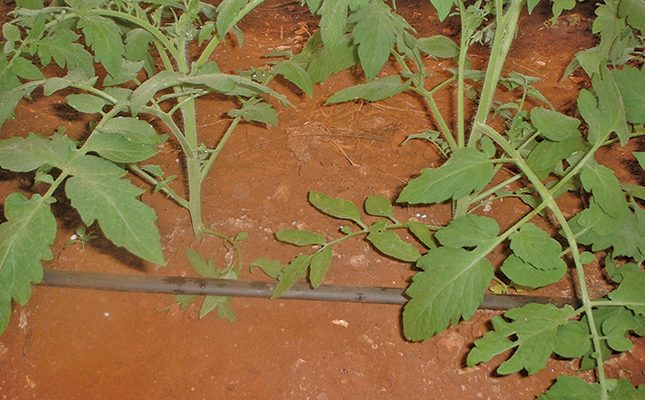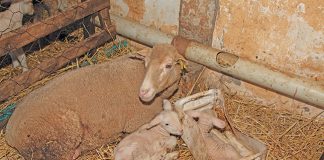
Tomato seedlings are usually planted out after winter (or after a break in hotter areas). This means there is a risk of damage to the transplants from insects such as cutworms, beetles and millipedes seeking fresh greens.
These pests can be present even when the ground has been barren for some time, as they can survive on dry plant residue. To protect against them, apply an insecticide such as a pyrethroid beforehand.
READ Understanding a tomato seedling’s instincts
You may be advised to carry out a complete precautionary spray programme to counter pests or diseases. I find this to be unnecessary and costly. Get to know the diseases that pose a threat in your area and whether any of these are spread by an insect vector.
If there’s a problem, apply a suitable product. Fungal and bacterial diseases usually become hazards only at a later stage and you can save considerable cost by monitoring the crop frequently and then spraying if any pest or disease starts.
A matter of timing
Pest species can vary from one year to the next. In some years, for example, your farm might see an outbreak of African bollworm; in others, you may get semi-loopers. Aphids, too, are unpredictable. Even the ‘arrival time’ of a known pest species during the year may vary. All of this means that frequent inspections are a must.
If curly stunt virus is a problem in the area, you may have to apply a suitable systemic product to the soil or young plants to provide long-term control of the whitefly vector.
READ
When applying pest-control products at this stage (assuming this is necessary, of course), use a normal or motorised knapsack, as this makes it easier to wet the young plants rapidly and economically. A motorised knapsack is preferable if you need to wet the underside of the leaves as well.
Nonetheless, given the high cost of chemicals, you need to do everything you can to minimise the use of these products while still controlling pests and diseases.
Fertiliser
Fertiliser side dressings are usually not necessary for some time after transplanting, provided the initial basic fertiliser is applied according to a soil analysis. If there has been heavy leaching due to rain, consider applying nitrogen close to the plants.
Remember that the expanding root system will recover many nutrients as the roots grow, so supplement nutrients only as required.
Newly planted seedlings also need very little water at this stage. Drip irrigation is the norm for tomatoes, so irrigate a small volume close to the plants on a more frequent basis until the roots have penetrated sufficiently.
It is only much later, when the total leaf area has grown substantially, that the plant will draw noticeably more water from the soil. This is when heavier irrigation is required.
Dig into the soil with a garden trowel to monitor the moisture status of the land. The leaves will also show you when the plants are getting thirsty; learn to read them. Over-irrigation wastes water and leaches nitrogen.
Bill Kerr is a vegetable specialist and grower.












